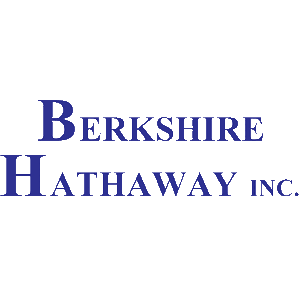Primaris Real Estate Investment Trust
TSX:PMZ.UN

| US |

|
Johnson & Johnson
NYSE:JNJ
|
Pharmaceuticals
|
| US |

|
Berkshire Hathaway Inc
NYSE:BRK.A
|
Financial Services
|
| US |

|
Bank of America Corp
NYSE:BAC
|
Banking
|
| US |

|
Mastercard Inc
NYSE:MA
|
Technology
|
| US |

|
UnitedHealth Group Inc
NYSE:UNH
|
Health Care
|
| US |

|
Exxon Mobil Corp
NYSE:XOM
|
Energy
|
| US |

|
Pfizer Inc
NYSE:PFE
|
Pharmaceuticals
|
| US |

|
Palantir Technologies Inc
NYSE:PLTR
|
Technology
|
| US |

|
Nike Inc
NYSE:NKE
|
Textiles, Apparel & Luxury Goods
|
| US |

|
Visa Inc
NYSE:V
|
Technology
|
| CN |

|
Alibaba Group Holding Ltd
NYSE:BABA
|
Retail
|
| US |

|
JPMorgan Chase & Co
NYSE:JPM
|
Banking
|
| US |

|
Coca-Cola Co
NYSE:KO
|
Beverages
|
| US |

|
Walmart Inc
NYSE:WMT
|
Retail
|
| US |

|
Verizon Communications Inc
NYSE:VZ
|
Telecommunication
|
| US |

|
Chevron Corp
NYSE:CVX
|
Energy
|
We'll email you a reminder when the closing price reaches USD.
If you don’t study any companies, you have the same success buying stocks as you do in a poker game if you bet without looking at your cards.

Utilize notes to systematically review your investment decisions. By reflecting on past outcomes, you can discern effective strategies and identify those that underperformed. This continuous feedback loop enables you to adapt and refine your approach, optimizing for future success.
Each note serves as a learning point, offering insights into your decision-making processes. Over time, you'll accumulate a personalized database of knowledge, enhancing your ability to make informed decisions quickly and effectively.
With a comprehensive record of your investment history at your fingertips, you can compare current opportunities against past experiences. This not only bolsters your confidence but also ensures that each decision is grounded in a well-documented rationale.
Do you really want to delete this note?
This action cannot be undone.

| 52 Week Range |
13.77
16.33
|
| Price Target |
|
We'll email you a reminder when the closing price reaches CAD.
Choose the stock you wish to monitor with a price alert.

|
Johnson & Johnson
NYSE:JNJ
|
US |

|
Berkshire Hathaway Inc
NYSE:BRK.A
|
US |

|
Bank of America Corp
NYSE:BAC
|
US |

|
Mastercard Inc
NYSE:MA
|
US |

|
UnitedHealth Group Inc
NYSE:UNH
|
US |

|
Exxon Mobil Corp
NYSE:XOM
|
US |

|
Pfizer Inc
NYSE:PFE
|
US |

|
Palantir Technologies Inc
NYSE:PLTR
|
US |

|
Nike Inc
NYSE:NKE
|
US |

|
Visa Inc
NYSE:V
|
US |

|
Alibaba Group Holding Ltd
NYSE:BABA
|
CN |

|
JPMorgan Chase & Co
NYSE:JPM
|
US |

|
Coca-Cola Co
NYSE:KO
|
US |

|
Walmart Inc
NYSE:WMT
|
US |

|
Verizon Communications Inc
NYSE:VZ
|
US |

|
Chevron Corp
NYSE:CVX
|
US |
This alert will be permanently deleted.































Good morning, and welcome to Primaris REIT's Fourth Quarter 2024 Results Conference Call. [Operator Instructions] I will now hand over the call to Claire Mahaney, Vice President, Investor Relations and ESG. Please go ahead.
Thank you, operator. During this call, management of Primaris REIT may make statements containing forward-looking information within the meaning of applicable securities legislation. Forward-looking information is based on a number of assumptions and is subject to a number of risks and uncertainties, many of which are beyond Primaris REIT's control that could cause actual results to differ materially from those that are disclosed in or implied by such forward-looking information.
Â
Additional information about these assumptions, risks and uncertainties are contained in Primaris REIT's filings with securities regulators. These filings are also available on our website at primarisreit.com. I'll now turn the call over to Alex Avery, Primaris' Chief Executive Officer.
Good morning. Thanks for joining Primaris REIT's Fourth Quarter 2024 Conference Call. Joining me today are Pat Sullivan, President and COO; Rags Davloor, CFO; Leslie Buist, SVP, Finance; Mordecai Bobrowsky, SVP, General Counsel; Graham Procter, SVP, Asset Management; and Claire Mahaney, VP, IR and ESG.
Â
We are very pleased with our 2024 results, particularly our strong growth in same-property NOI and FFO per unit. In 2024, FFO per unit was up 6.5%. Committed occupancy is approaching 96%. And importantly, we saw continued and material improvement in our recovery ratios. Rising recovery ratios were a key driver in our 2024 financial performance, and there is considerable further room to drive tax recoveries into the low to mid-90s percentage range and CAM recoveries into the high 90s percentages.
Â
This should continue to be a key driver for NOI and FFO over the next few years. In addition to our strong financial and operating results, we have been very active leveraging our disciplined capital allocation model, recycling capital from dispositions into acquisitions of leading and closed shopping centers in growing Canadian markets. On January 22, we announced the $585 million acquisition of Oshawa Center in Oshawa, Ontario and a 50% interest in Southgate Centre in Edmonton, Alberta.
Â
We are increasing our relevance with retailers and building on Primaris' profile as an attractive buyer of large high-quality assets. Consistent with prior acquisitions, these additions to our portfolio are designed to deliver higher internal growth, driving NAV per unit growth, FFO per unit growth and ultimately distribution per unit growth.
Â
Since December 31, 2021, Primaris acquired $2.4 billion of leading and closed shopping centers from 5 of Canada's 10 largest pension plans with the vendors taking back equity and exchangeable preferred equity investments in the REIT. With the transactions announced last month, we have improved the overall quality of our enclosed shopping center portfolio, driving the portfolio's annual same-store sales productivity from $684 per square foot as at September 30, 2024, to $749 per square foot on a Q4 pro forma basis. These properties enhance the REIT's value proposition with retailers and offer a significant income growth opportunity consistent with the growth we see ahead for our existing assets.
Â
We continue to be very active in discussions on several acquisitions and dispositions. We have capacity for well more than $1.5 billion of acquisitions and require no financing conditions in our deals. This profile as a well-capitalized and credible counterparty is a real differentiator in what is currently a challenging transaction market for many. I'll now turn over the call to Pat to discuss operating and leasing results, followed by Rags, who will discuss our financial results.
Thank you, Alex. Our leading enclosed shopping center portfolio performed very well in 2024 with NOI growth coming from strong rental revenue growth, rising occupancy and falling nonrecoverable expenses. Over the last 4 months, Primaris has acquired approximately $910 million of dominant enclosed shopping centers, and our team is doing an excellent job integrating those assets into our national full-service platform.
Â
As the largest owner and manager of enclosed shopping centers in Canada, measured by mall count, Primaris is very quickly moving towards our ambition of becoming the first call for retailers looking to grow and expand their footprint in Canada. Southgate Center in Edmonton, Alberta is a leading super regional enclosed shopping center and is the eighth most productive mall in Canada, producing approximately $1,375 per square foot and over $300 million in total CRU sales. It is located in the southern portion of Edmonton in the affluent neighborhood of Malmo Plains with exceptional accessibility and visibility along major traffic corridors, drawing shoppers from across the greater Edmonton area and beyond.
Â
The center is an 846,000 square foot mall located on 39 acres of land for an approximate 66% site coverage. The property is in great shape. And in 2022, $93 million was invested into the 260,000 square foot redevelopment of the former Sears space, creating an additional CRU and atrium. With in-place occupancy of 91%, there is opportunity for lease-up and future rental revenue growth.
Â
Oshawa Center is a leading regional shopping center in the high-growth market of Oshawa, Ontario located 40 minutes east of Toronto. The center is a 1.2 million square foot mall inclusive of approximately 100,000 square feet of office and is located on 79 acres of land for an approximate 47% site coverage. The mall produces $758 per square foot same-store sales productivity and total CRU sales volume of $242 million.
Â
In 2016, there was a $230 million, 375,000 square foot redevelopment completed, which included the addition of 260,000 square feet of CRU space, a food court expansion and upgrades throughout the entire center. In-place occupancy is 91.9%. Consistent with the acquisition strategy we have been communicating, these acquisitions offer very strong NOI growth over the next few years as operating and financial performance normalizes and as Primaris full-service management platform integrates and operates the properties.
Â
Opportunities to increase operating income at both properties includes the conversion of tenants on preferred rent deals to standard net leases, lease-up of approximately 56,000 square feet at Southgate Center and 98,000 square feet at Oshawa Center, a temporarily tenanted or vacant space to strong tenants at market rents.
Â
On to operating results. Our same property cash NOI was up 9.1% for the quarter and 4.5% for the year, primarily driven by increased occupancy, higher rents and very strong recoveries. Recovery ratios for the year came in almost 4% higher versus 2023, consistent with the guidance we provided at the Investor Day in September of last year.
Â
For context, every 1% increase in CAM and tax we recover equates to approximately $2 million annually. This number directly impacts the bottom line. Despite recent volatility in the markets and negative headlines, the underlying fundamentals for shopping centers continue to be supported both by low retail supply, strong tenant sales, population growth and continued tenant demand for quality space as well as our national full-service platform and team.
Â
Portfolio in-place occupancy was 94.5%, up 2.1% from Q4 last year. Committed occupancy was 95.6% versus 94.2% in the same quarter last year. We are approaching historical occupancy levels and our target of 96% in-place occupancy, and we expect to achieve this target over the next 24 months given our strong pipeline of leasing activity.
Â
At these higher occupancy rates, we will be in a better position to drive rents further upward and proactively replace underperforming tenants. Leasing activity remained strong during the quarter with 87 leases renewed at spreads of 5.3%. And for the full year, leasing spreads were 4.8%. In addition, we completed 31 new deals encompassing 94,000 square feet during the quarter.
Â
And over the year, the team completed 121 new transactions encompassing 464,000 square feet, which is approximately 100,000 square feet more than new leasing completed during the same period in 2023. Not captured by our leasing renewal spreads is the conversion of leases with preferred rental terms such as percentage rent in lieu of base rent back to net leases.
Â
The implication being that there are additional rental gains beyond those captured by the traditional net to net leasing spreads analysis, and our leasing spreads understate the growth we are experiencing. At quarter end, approximately 7.7% of our tenant base was on preferred rental structures compared to 11% at year-end and at 15% at the beginning of 2023.
Â
This figure will continue to decline during the balance of the year, which is having a significant positive impact on our NOI for 2025 and beyond. Also of note, we've successfully reduced our percentage rent in new tenants to 3%, which we consider to be a stabilized number at this point. We've made tremendous progress reducing this number over the last few years.
Â
Before I move on to tenant sales, a few comments on Comark. As we highlighted in our disclosures, Comark filed for creditor protection in January. Primaris had 36 stores operating under the banners of Bootlegger, Cleo, and Ricki's within the Primaris portfolio.  Comark would be the 9th and 20th largest tenant measured by annualized minimum rent and gross rent, respectively. The majority of Comark leases are gross rent-only leases. Therefore, gross rent is a better reflection of the REIT's exposure to Comark as it includes recoverable operating costs such as Common Area Maintenance and taxes.Â
Â
We have intentionally maintained Comark weighted average lease term at 1 year to enable flexibility in releasing the Comark space. As we highlighted during our Investor Day on September 24, Primaris implemented risk mitigation strategies for higher-risk tenants. Since the pandemic, Primaris has been actively working to market the Comark space and already has plans to replace most of the stores upon expiry of the Comark leases. A potential buyer has emerged for 13 of our Comark locations, and we are in active discussions with new tenants for approximately 15 locations, equating to approximately 50,000 square feet.Â
Â
Same property same-store sales productivity has grown to $705 per square foot as at the end of Q4. And pro forma for the transactions announced last month, sales productivity rises to $749 per square foot. For the past 24 months, tenant sales have rebounded significantly from the pandemic air loads with many retailers operating in our properties now reporting their highest 12-month rolling sales figure at the property since opening.Â
Â
Of particular note, the months of August, which is the back-to-school shopping period, and November, specifically Black Friday and December were strong sales months. Sales productivity and growth should be viewed over the long term, not necessarily on a quarterly basis given the ongoing remerchandising efforts and seasonality of the shopping center business. While overall reported sales productivity figures continue to show growth, our primary focus remains on driving occupancy and NOI higher, not on undertaking actions simply to drive the reported mall productivity figure higher.Â
Â
Over the long run, we anticipate sales growth at our properties will occur due to strong fundamentals in the shopping center industry due to a 30-year low in per capita enclosed mall square footage in Canada, coupled with population growth. To conclude, our business is performing very well, and we are positioned to capture continued growth within our malls. And with that, I'll turn the call over to Rags to discuss our financial results. Rags?
Thank you, Pat, and good morning, everyone. Strategically, we continue to focus on our differentiated financial model, represented by low leverage, low payout ratio, and significant free cash flow, which we believe is a major strategic advantage for Primaris REIT. Our operating and financial results for the quarter and year remain very strong. We are seeing very strong NOI growth from our portfolio, specifically the acquisition properties and our many operating metrics are continuing to improve. Our business is reaching critical mass as can be seen in our G&A as a percentage of rental revenue, which has begun to stabilize.Â
Â
For the quarter, FFO per unit was $0.46 as compared to $0.40 for the same quarter last year. Despite higher interest rate costs and increased unit count as a result of high-quality accretive acquisitions completed over the last 12 months and the strong same-property growth, FFO was up 14.5%. For the year, FFO per diluted unit was $1.69, up 6.5% over 2023. Our average net debt to adjusted EBITDA was 5.8x and within our range of 4 to 6x. As a reminder, this range forms part of our executive compensation structure with the top end of the range of 6x.Â
Â
In November 2024, Primaris secured a $70 million mortgage at a contractual interest rate of 4.62% on Place d'Orleans in Orleans, Ontario, a suburb of Ottawa. This property is held in a 50% co-ownership arrangement. Considering the prefunding of the Series B debentures maturing next month, on a pro forma basis, Primaris' weighted average interest rate and term to maturity on the total debt is 5.37% and 4.35 years, respectively.Â
Â
With unencumbered assets of $3.6 billion, $385 million available on our operating line, and the prefunding of our March 2025 debt maturity, we have no unfunded debt maturity until 2027. We have eliminated refinancing risk in the medium term and have access to significant liquidity. During the quarter, we closed on the sale of Edinburgh Marketplace in Guelph, Ontario for $31.5 million and in Q1, announced the sale of Sherwood Park Mall and Professional Center for $107 million, both in line with our IFRS fair value. These dispositions in addition to our $240 million in assets held for sale pool align with our strategy to focus on owning a growing high-quality portfolio of leading and closed shopping centers in Canada.Â
Â
These dispositions improve our overall portfolio quality and growth profile and again, demonstrate Primaris' ability to transact and provide proceeds available to fund further acquisitions. Primaris has been in the market repurchasing units since March 9, 2022, under the NCIB. As at year-end, we have purchased for cancellation 9.8 million units at an average value per unit of approximately $13.88 or an approximate 35.6% discount to our NAV of $21.55. This program is very accretive to unitholders.Â
Â
The team is continuing to progress on ESG initiatives. We reached a number of important milestones in 2024, which we disclosed in our second annual ESG report, which was released in December. These milestones include the integration of ESG into the employee performance review process, enhancements to our tenant engagement program, and the incorporation of Green Lease language into our standard lease form.Â
Â
We announced our inaugural ESG targets, which include a 25% reduction in greenhouse gas emissions by 2035 and stability and growth in our scores of tenant satisfaction and employee engagement, green building certifications, and our GRESB score. Year-over-year, our emissions are down 5%, a testament to our very engaged and experienced property management teams who are continuously looking for ways to optimize our properties.Â
Â
In 2025, we will focus on developing a decarbonization plan aligned to achieve our greenhouse gas emissions reduction target, the CSDS S1 and S2 standards, and the TCFD framework. Given our strong results to date and confidence in the strength of our business, we are providing 2025 guidance. We anticipate some properties cash NOI growth to be in the range of 3% to 4% and FFO per unit diluted to be within the range of $1.70 to $1.75. Our guidance includes the impact of January 31, 2025, acquisitions and approximately $300 million of dispositions throughout the year.Â
Â
No additional further acquisitions were incorporated into the guidance. Further details of our 2025 guidance can be found in Section 4 of the MD&A titled Current Business Environment and Outlook. Overall, we are pleased with our results for 2024 and are optimistic of the outlook in 2025 and beyond. Maintaining a conservative financial model and generating free cash flow after distributions and operating capital is a core focus, which we will not deviate from. And with that, I will turn the call back to Alex.
Thank you, Rags. 2024 was a very strong year for Primaris and 2025 is off to a great start. Our portfolio is performing well with a significant further runway as rising occupancy and recovery ratios drive NOI and FFO growth. The properties we have added to the portfolio over the past few years are enhancing our internal growth profile and increasing our relevance with retailers. We expect to see more capital recycling materialize in 2025, providing more capital for further acquisitions.Â
Â
Terming out our debt ladder over the last few years constrained FFO per unit growth, but we have rounded that corner with a weighted average interest rate of 5.3% and now see refinancing opportunities at lower interest rates in the near future. We expect to see material growth in NAV and cash flow per unit in 2025 and 2026, driven by internal growth, reinvestment of excess free cash flow, and stable valuation metrics. Underpinning our 2025 financial guidance is our expectation for more of what we saw in 2024, strong internal growth, highly impactful capital recycling, a significant improvement in the trading volume of our units, and growth across all of our key metrics.Â
Â
In conclusion, we are very pleased with how our business is performing and are excited about what lies ahead. We'd now be pleased to answer any questions from the call participants. Operator, please open the line for questions.
[Operator Instructions] Your first question comes from the line of Lorne Kalmar from Desjardins.
Congrats on a solid finish to 2024. Just quickly on the specialty leasing revenue in the quarter, I think it was about just a little over $8 million, up pretty significantly, certainly versus the average of the first 3. I was just wondering, should we expect that to revert back to the $4 million range in 1Q if we exclude the Southgate and Oshawa Centre acquisitions?
Yes. Lorne, it's Pat. Capitale was in Q4, and that was one of the drivers for the jump. So that's going to continue. SL revenue does drop in Q1, of course, because of the seasonality. But certainly, Capitale has had an elevated amount of vacancy that helped drive that number higher. That will change next year as we lease up space.
Okay. And then maybe just on the guidance, can you give us an idea of what it contemplates in terms of recovery ratios for 2025?
Yes. My guess would be, say, 3% to 4%. We don't have the number.
We've modeled it, obviously, asset by asset. So I don't have the overall number available, but we certainly see improvement in the recovery ratios.
Okay. So I guess fairly consistent with what you guys disclosed at your Investor Day for 2025.
And Lorne, just for context, over the course of 2024, we made about 400 basis points of improvement, and we think there's another maybe 13% to 17% improvement in that ratio. So we've been feeling the strong tailwind, but there's certainly quite a bit more to come. It's just a little bit difficult to pinpoint because it's not just any individual lease, it's how the leases work together and the cadence of lease commencement and occupancy as well as lease conversions.
Part of the noise we're going to have going forward, and we will try and look at segregating more Same-property information as we bolt on these new acquisitions, and they're sizable, obviously, some of these numbers start to move around a bit. So we will try and give you that clarity. We also get blended in, right? And on a Same-property basis, they can be improving. But overall, the ratio may not look like it's going up. So we'll have to give you that line of sight.
Your next question is from the line of Mark Rothschild from Canaccord.
Maybe in regard to the unit buyback, you have been active in large transactions, which to use capital and maybe put you in blackout that you can't buy back stock. But considering how much capital you are retaining and where the unit price is, just curious how seriously you're thinking about using that this year with cash flow and how much of it does depend on the acquisition pipeline?
That's a good question, Mark. We did spend a bunch of time talking about that yesterday with our Board. And I would say, directionally, more is probably the way that we're headed. And on the surface, you might think that if we're contemplating a lot of acquisitions, it might be more advantageous to dial it back. But in fact, the return profile of buying back our stock at these levels is just so superior to anything else we can do with our capital that once we talk fully through the analysis, it really is our best use of capital.
So with the disposition activity that we've already announced plus what we can see in the pipeline, we have quite a bit of liquidity. And as we're doing that, we're buying back units at a dramatic discount to the price at which we're selling properties and the acquisitions that we're buying are partially funded through equity, but also just really great additions to the portfolio. So it kind of all pulls together with expect more acquisitions, more dispositions and more buyback.
Yes. I think, Mark, when you look at our Dispo Program it's not calibrated solely to fund acquisitions. We do look at it that when we sell, we do sort of allocate a portion of those proceeds to continue the share buyback program because it's so attractive. And then we also look at funding the acquisition side of the house. So the Dispo Program is not geared solely to fund acquisitions.
Okay. Great. And maybe just one more on the occupancy. Clearly, we still see improvement late in the year. But things have changed since your Investor Day when you gave that pretty optimistic outlook for the next couple of years improvements in occupancy. Would you want to temper that somewhat? Or do you still think you can reach that level or potentially even exceed it based on everything you see today?
Mark, we're still optimistic we're going to get there and optimistic we can actually exceed it on a Same-property basis. The malls we just bought specifically Oshawa has an elevated amount of vacancy, which is a great opportunity for us, and we'll be tackling that. But certainly on a Same-property basis, we're very much optimistic we're going to meet or exceed the number.
Your next question comes from the line of Brad Sturges from Raymond James.
Appreciate the disclosure and comments around Comark and can understand it's the contribution on the revenue side is a little bit lower. Just want to understand the mechanics. It sounds like for 13 stores there would be limited or no disruption on rent. And then what would be your expectations, I guess, for transitional making for the rest of the stores?
I would suggest so, things have changed a little bit in the last 24 hours, too. There's actually about 16 stores that have been purchased. We're just working through the terms on those, but we're keeping them relatively short term, and the financial numbers are slightly less, but not materially. There's 3 stores that look like they're going to be bought by a different division of the same private equity company that owns the chain. So warehouse is going to pick up 3Â Bootleggers. And then we have good traction on re-leasing about 50,000 square feet of the other space. So we're in a pretty good position to kind of manage the Comark situation, which, to be honest with you, we had expected to do so anyways in our budget because almost all of them are expiring in June of 2025, and we had made provisions for replacing the majority of them already.
Makes sense. And just in terms of other retailers or tenants, anything else on the watch list at this point?
Nothing of note. Those tenants that we kind of monitoring their sales where they're certainly not keeping up with other tenants' growth profiles. Some that we were watching a little more closely. We're not so concerned about anymore as their sales have rebounded. There's 2 or 3 tenants that I would say on our watch list that have bounced back. There's another chain that was on our watch list that actually got purchased. So it's always in transition, but there's certainly nothing of note on there that's of concern.
Your next question comes from the line of Mario Saric of Scotiabank.
The first question just for Pat, more of a high-level question. The portfolio is doing really well. Tenant sales are stable despite having ramped up materially post COVID. Just it sounds like your watch list is pretty low, in fact, maybe declining a little bit relative to 3 to 4 months ago, the occupancy upside, you're pretty confident. So I appreciate all that. And I also appreciate in the past, you talked about when there is like economic turbulence, it takes a while to show up in the performance. It's not overnight. But the market seems very focused on U.S. tariffs, decelerating population growth negatively impacting the GDP growth.Â
I'm just curious, like when you look back over your career, like have you seen such a dichotomy in terms of actual on-the-ground performance and uncertain macro environment or uncertain macro sentiment? And how do you think about optimizing the portfolio in that regard?
Sadly, you're making me feel old. I can go back a long way here. Yes, certainly I have seen the ups and downs in the retail business over periods where malls were considered to be the fortress trophy assets, and they listed them very well. 2008 specifically was more of an American event than a Canadian event. We came through it very well. It was the subsequent years, say, 2011, '12, where there was a lot more turbulence in terms of
[Audio Gap]Â
 in 2015, that certainly had an impact on suggest you that the primary driver in retail in general is the lack of available space and tenant demand for opening stores is still significant.  And that actually is a dynamic that hasn't existed in my career. There was always a lot of retail space. There was always a lot of construction going on for retail, and you just don't have it right now. And so tenants, they're actively looking for store locations and they just can't find real estate and construction costs are almost making it prohibitive to build anything from strip malls to mall expansions. It's tough. So that's why you're seeing the rental rates rise as you are in all the retail asset classes, just lack of space.
And what is your sense in terms of the magnitude of higher rents required, not necessarily for enclosed malls, but just generally speaking, for potentially competitive space for you. What is the quantum in terms of higher rent required in order to justify a more meaningful uptick in retail construction?
It's a significant number, and yet acquiring a large parcel of land and then servicing it and building is very significant, coupled with tenants like properties that are tried, tested and true like they understand them. When you build something new for them, there's an uncertainty of where their sales are going to be. And so your ability to generate the rents you need to justify the construction are tough and you take a big risk. And I think you can look to a couple of developments where that happened, where the landlords ended up taking big gambles and doing very aggressive deals being the new property in Quebec and even the Triple Five development in New Jersey. They had to do very aggressive deals to fill the buildings. And that's a high-risk proposition that a lot of people won't take.
And I guess one of the questions you got to ask yourself is what's the yield people are prepared to accept. And has that changed? Certainly, in the past, we knew that people would, in some cases, go forward on a 5 yield. I'm not sure people are going to do that anymore. So if you sort of work that math, you got to be in the 80s, $780 a foot.
Just to build an outparcel right now or any kind of new pad, you really need rent in the 50s and 60s to make sense of it let alone an enclosed mall, which you would need to almost probably double what rents we're generating to justify building.
Yes. The replacement cost of the building is probably $800 a square foot. The land component is about $200. So you're about $1,000 a square foot to replace an enclosed shopping center. And to the point, $75 or $80 net is probably what is required there. If you just look at existing property cap rates, you would want to have certainly $70 net. And then when you look at our overall average in-place net rent, it's in the $24, $25 range, which implies rents have to go up 3x from where we are today.
Your next question is from the line of Sumayya Syed of CIBC.
In the guidance that you put out and you're expecting the occupancy to go up 80 to 100 basis points, does that reflect that the Comark space will be leased up or addressed within the year? Or is there any downtime factored in that guidance?
No, I don't think it impacts our forecast. As I mentioned earlier, we had already anticipated a lot of these stores turning over in 2025, and the bankruptcy really didn't change that. The fact that somebody is coming along to buy the stores and in some cases, convert the banner is just going to enable us to generate revenue for longer than we would have anticipated as we manage through the replacement of the stores.
Okay. And I think Comark was a significant component of the nonstandard leases you're trying to roll down. Is the rest of that bucket of leases diversified? Or are those also concentrated amongst a handful of tenants?
Yes. There is a concentration towards certain brands in that bucket, and that will go away or reduce further as we remerchandise. Comark represents about 2% of that number. So when I say 7.7%, it will go down to like 5% and change with Comark no longer being on that list.
Your next question comes from the line of Sam Damiani from TD Securities.
First question, just on occupancy and how you see that evolving over the next year or 2 with the mix a little more skewed to short term in the fourth quarter. And Pat, as you mentioned, the Galeries was a contributor there. But how do you see that sort of ending 2025 versus where it is today, the mix between...
Thanks, Sam. Our leasing team is doing a fantastic job of leasing up spacing. We did a lot of new deals in 2024, and we did a lot in 2023, and I expect that cadence to continue throughout 2025. And we are going to continue to convert a lot of these temporary tenants to permanent. Galeries Capitale is a great example. I mean we closed on it in October. We've got a lot of leasing momentum on the space there, and I fully expect us to make a significant dent in the amount of space that's available there. Devonshire, we knocked down the Sears. We've taken about 40,000 square feet, plus or minus of temporary tenant or vacant space, put 2 large Walmart stores in. They'll be open later this year. So there's a lot of activity that's going on, and I am very optimistic that we'll meet or exceed our occupancy targets.
Okay. That's great. And last question, I guess, just sort of back to the results. I think it was touched on a little bit earlier. I guess, both with the specialty leasing, but also the percentage rent ticked up notably in the quarter. Like was that a sustainable level of, sales-driven percentage rent? Was there something unusual that happened? Did the GST break have a factor or anything else that would cause us to look at that percentage rent and maybe discount that a bit for going forward?
So percentage rent is purely a function of people that are exceeding their breakpoint and sales for a lot of tenants have exceeded their breakpoint. And you get a lot of tenants that their breakpoints are skewed towards the end of the year, and that's when they break. You may see that number come down in the future, but it's a direct correlation between us resetting their base rent and their breakpoint increasing as a result. So there's a lot of tenants whose sales have driven significantly over the last number of years. that are now breaking the breakpoint, exceeding their breakpoint. And as those renewals are executed on a go-forward basis, the percentage rent will drop, but the increase in rent will offset that number.
[Operator instructions]Â Your next question comes from the line of Pammi Bir of RBC Capital Markets.
Just in terms of the same-property NOI growth guidance, how much of that is being driven by the conversion of percentage rent in new leases? I don't know if you have that figure either on a proportion of that 3% to 4% or just a dollar value basis.
I think it's been significant for the past couple of years simply because that's been a main feeder into our recovery ratio increases. I think going  forward, it's not a significant driver simply because we're approaching more stabilized normal level. What really is driving our numbers going forward has been leasing up space. It's increasing occupancy. That benefit both our retail rental growth and it also directly benefits our recovery ratios as we fill up space and get recoveries and net rent from tenants, it goes straight to the NOI line. So that's really the primary driver.
Okay. So the conversions would be like arguably, are we talking like less than 1/3 of that 3% to 4% guidance or even less than that?
I would say less than that.
The $300 million of dispositions, and I guess, excluding Sherwood Park, what kind of traction are you seeing on those assets? And any update on the potential timing of when we may see some of those deals actually happen?
We're seeing very good traction on our dispositions. We're in active discussions right now, and I would expect that we'll have some news coming out in the next couple of quarters.
The deals take a while to pull together. That's part of the challenge that everything takes longer these days. But certainly, we're -- we've noticed the change in tone, and we do believe that the $300 million would be $200 million on top of Sherwood, that is immensely doable. Hopefully, we can move up the timeline earlier in the year and do better than the 3, but we're being cautious in the guidance.
Your next question comes from the line of Mario Saric of Scotiabank.
Sorry, one quick follow-up, just a clarification for Pat and it's Pat. I remember meeting you 20 years ago. So when I asked the question, I'm aiding myself in addition to yourself, so you're not alone. But the clarification, just on the comment that percentage of rent leases are now stabilized at a level of 3%. Is that pertaining just to the percentage of sale lease arrangements that have percentage rent? Or does the comment also hold for other unconventional lease structures that you've been looking to restructure into net rent deals?
It's more related to the percentage rent in lieu tenant leases. We still have a number of leases that are gross rent or a combination thereof, and those ones are likely they're going to come down more, but the percentage rent lieu only, that's more or less a stabilized number at this point in our view.
There are no further questions at this time. Claire, I turn the call back over to you.
Thank you, operator. With no further questions, we'll close today's call. On behalf of the Primaris team, we thank you all for participating and look forward to speaking with you again soon. Have a great long weekend. Thank you.
Thank you. You may now disconnect.